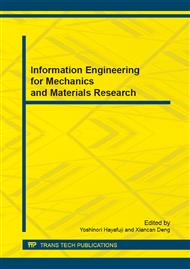p.279
p.285
p.291
p.296
p.303
p.309
p.321
p.327
p.336
Form Innovation Method Based on Genetic Algorithm and Product Semantics
Abstract:
From the perspective of combination principles, product form is divided into several modules for extracting profile curves; applying Genetic Algorithm (GA), product form chromosomes are coded in tree structure, through crossover and mutation operators to generate new programs; the method of product semantics is introduced into the process of evolutionary computation to enhance the interactivity of evolutionary computation by fuzzification, in which designer can decide the orientation from the selected products and guarantee the results can reflect the designer's innovative ideas. With Visual Basic and Rhinoceros platform a product form innovative design system is developed.
Info:
Periodical:
Pages:
336-342
Citation:
Online since:
September 2013
Authors:
Price:
Сopyright:
© 2013 Trans Tech Publications Ltd. All Rights Reserved
Share:
Citation:


